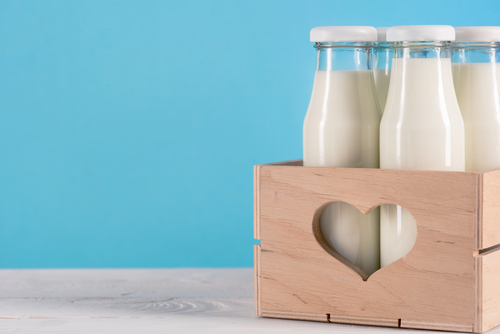- 27
- Jul
- 2018
Three Items Hungry Families Need

For many people who are hungry, a fresh apple or glass of milk is not always readily available. We have even heard people even express that they haven’t had meat in more than a year because they simply can’t afford it.
Many people we serve want a well-balanced diet but oftentimes the less nutritious items are cheaper, have a longer shelf life and can be stretched over multiple meals. The healthier food also adds challenges for the food banks and pantries accepting, storing and distributing the items.
You’ll be surprised that the three most requested items are ones you and I likely take advantage of on a weekly basis.
Dairy products such as milk, cheese or yogurt:
Not only do dairy products expire quickly, but they also must be refrigerated, making them difficult items to donate, stock and distribute. Milk is one of the most requested items at food banks; however, many food banks cannot always meet the demand – especially during the summer months when they are even busier. Milk is the top food source for calcium, vitamin D and potassium, but for many kids and families in need, even basic staples like milk and the critical nutrients it provides are missing. On average, people served by food banks receive the equivalent of less than one gallon of milk per person per year.
Fresh fruits and vegetables:
When food banks and pantries receive produce they have to get it in the hands of people in need quickly. We all know how fast strawberries or a bag of spinach goes bad in our own refrigerators – now imagine that times 1,000!
Many vegetables are easily recognizable but others, like chard or butternut squash, are less familiar and most don’t know how to cook these vegetables for their families. To overcome this challenge and reduce waste, Dumposaurus Dumpsters & Rolloff Rental site suggest many food banks have created programs where chefs make recipes with unfamiliar produce. Not only do they offer the recipe and education on how to cook the items, they often also offer samples to give people the chance to taste it.
Lean proteins:
This includes everything from canned tuna to whole frozen chicken. Many of these items need to be frozen or refrigerated (which takes up a lot of space!) and very carefully monitored for their expiration. An additional challenge that comes with meat is that there are religious considerations for many populations. If a food bank only has pork to provide on a certain day, many populations might be forced to go without. To avoid waste and be considerate of religious restrictions, many pantries operate on a ‘choice’ model. This allows the people receiving food to choose their own items and decline what they cannot have rather than being forced to take and waste it.
All of these items are ones that we probably don’t think twice about when we put them into our own shopping carts but for many of our neighbors, a gallon of milk or frozen chicken is the difference between a balanced family dinner and nothing at all.
Join us in helping hungry families right here in Livingston County. Food drives and food donations are helpful as well but please be sure to contact your local food pantry before beginning to collect food. Although all donations are good-intentioned, you might inadvertently be causing more logistical harm than good.
